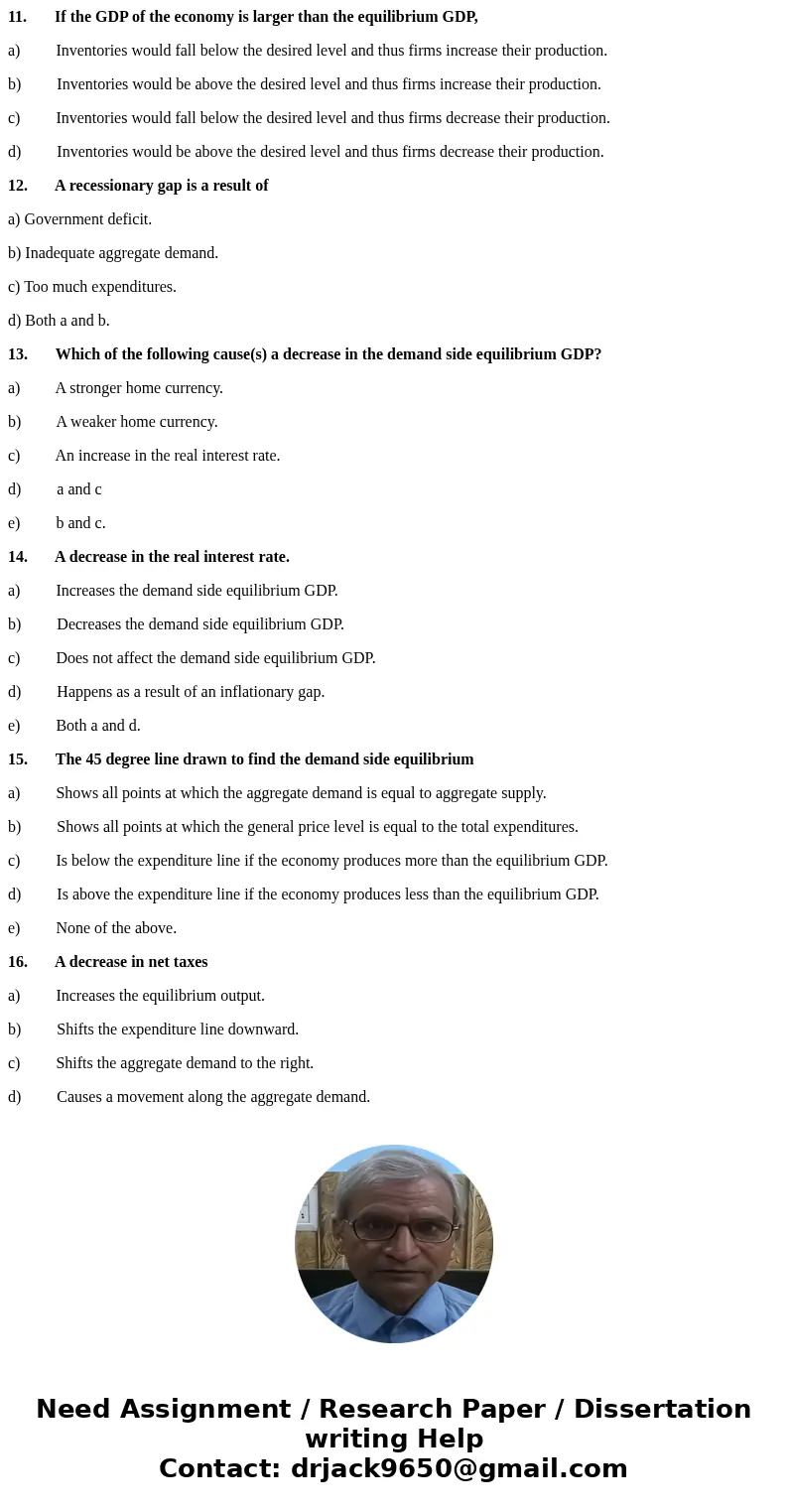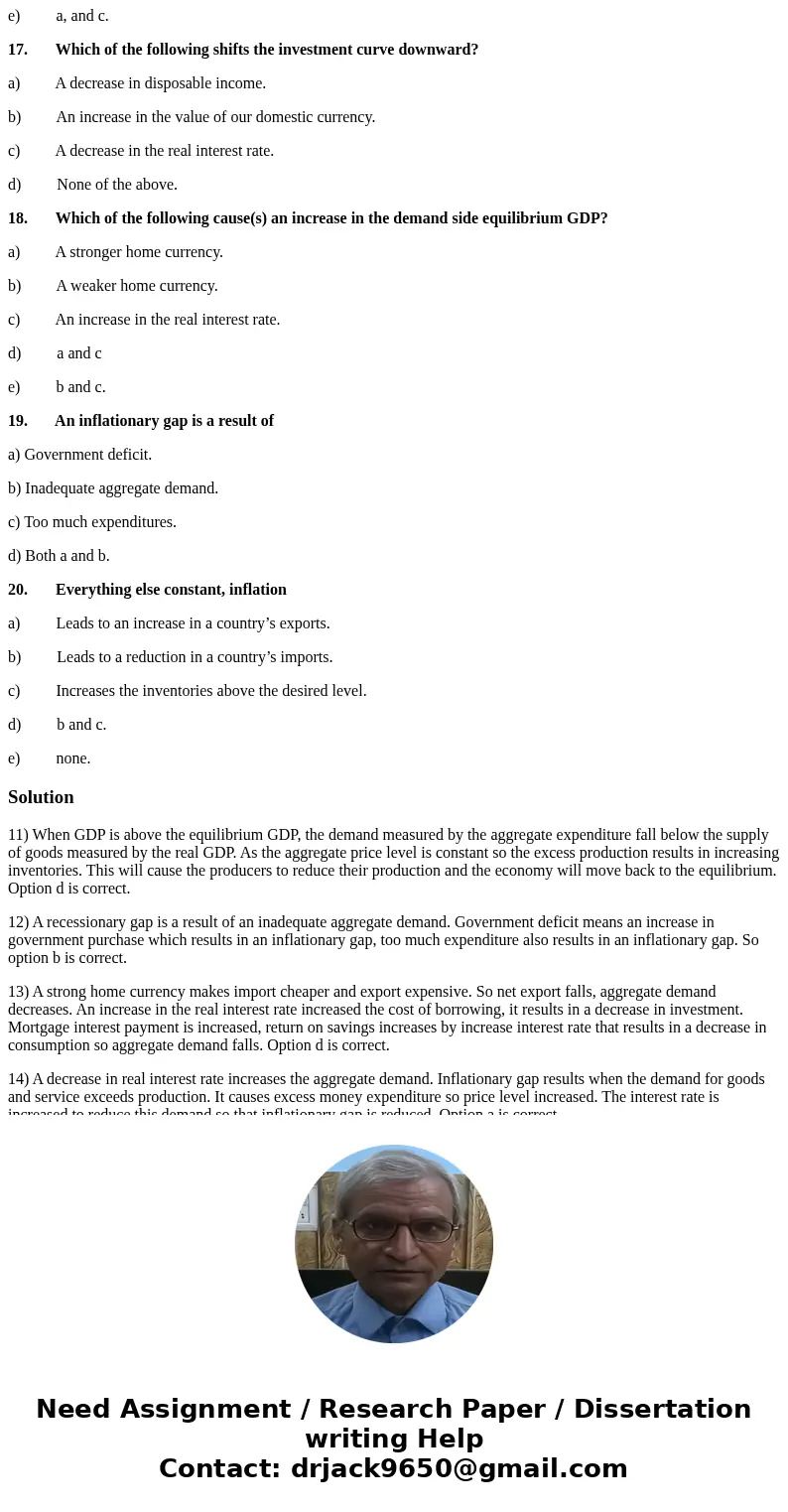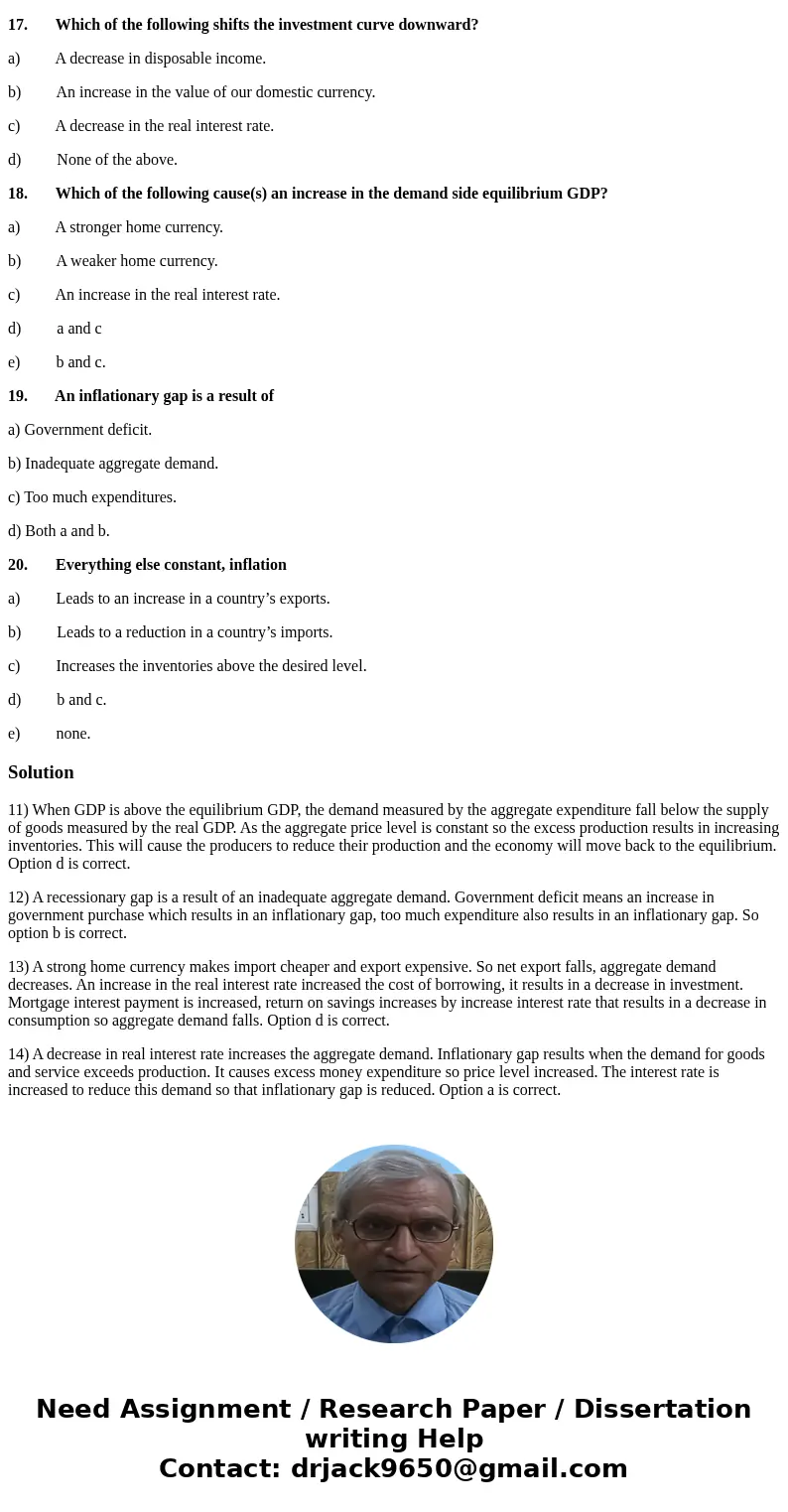11 If the GDP of the economy is larger than the equilibrium
11. If the GDP of the economy is larger than the equilibrium GDP,
a) Inventories would fall below the desired level and thus firms increase their production.
b) Inventories would be above the desired level and thus firms increase their production.
c) Inventories would fall below the desired level and thus firms decrease their production.
d) Inventories would be above the desired level and thus firms decrease their production.
12. A recessionary gap is a result of
a) Government deficit.
b) Inadequate aggregate demand.
c) Too much expenditures.
d) Both a and b.
13. Which of the following cause(s) a decrease in the demand side equilibrium GDP?
a) A stronger home currency.
b) A weaker home currency.
c) An increase in the real interest rate.
d) a and c
e) b and c.
14. A decrease in the real interest rate.
a) Increases the demand side equilibrium GDP.
b) Decreases the demand side equilibrium GDP.
c) Does not affect the demand side equilibrium GDP.
d) Happens as a result of an inflationary gap.
e) Both a and d.
15. The 45 degree line drawn to find the demand side equilibrium
a) Shows all points at which the aggregate demand is equal to aggregate supply.
b) Shows all points at which the general price level is equal to the total expenditures.
c) Is below the expenditure line if the economy produces more than the equilibrium GDP.
d) Is above the expenditure line if the economy produces less than the equilibrium GDP.
e) None of the above.
16. A decrease in net taxes
a) Increases the equilibrium output.
b) Shifts the expenditure line downward.
c) Shifts the aggregate demand to the right.
d) Causes a movement along the aggregate demand.
e) a, and c.
17. Which of the following shifts the investment curve downward?
a) A decrease in disposable income.
b) An increase in the value of our domestic currency.
c) A decrease in the real interest rate.
d) None of the above.
18. Which of the following cause(s) an increase in the demand side equilibrium GDP?
a) A stronger home currency.
b) A weaker home currency.
c) An increase in the real interest rate.
d) a and c
e) b and c.
19. An inflationary gap is a result of
a) Government deficit.
b) Inadequate aggregate demand.
c) Too much expenditures.
d) Both a and b.
20. Everything else constant, inflation
a) Leads to an increase in a country’s exports.
b) Leads to a reduction in a country’s imports.
c) Increases the inventories above the desired level.
d) b and c.
e) none.
Solution
11) When GDP is above the equilibrium GDP, the demand measured by the aggregate expenditure fall below the supply of goods measured by the real GDP. As the aggregate price level is constant so the excess production results in increasing inventories. This will cause the producers to reduce their production and the economy will move back to the equilibrium. Option d is correct.
12) A recessionary gap is a result of an inadequate aggregate demand. Government deficit means an increase in government purchase which results in an inflationary gap, too much expenditure also results in an inflationary gap. So option b is correct.
13) A strong home currency makes import cheaper and export expensive. So net export falls, aggregate demand decreases. An increase in the real interest rate increased the cost of borrowing, it results in a decrease in investment. Mortgage interest payment is increased, return on savings increases by increase interest rate that results in a decrease in consumption so aggregate demand falls. Option d is correct.
14) A decrease in real interest rate increases the aggregate demand. Inflationary gap results when the demand for goods and service exceeds production. It causes excess money expenditure so price level increased. The interest rate is increased to reduce this demand so that inflationary gap is reduced. Option a is correct.



 Homework Sourse
Homework Sourse